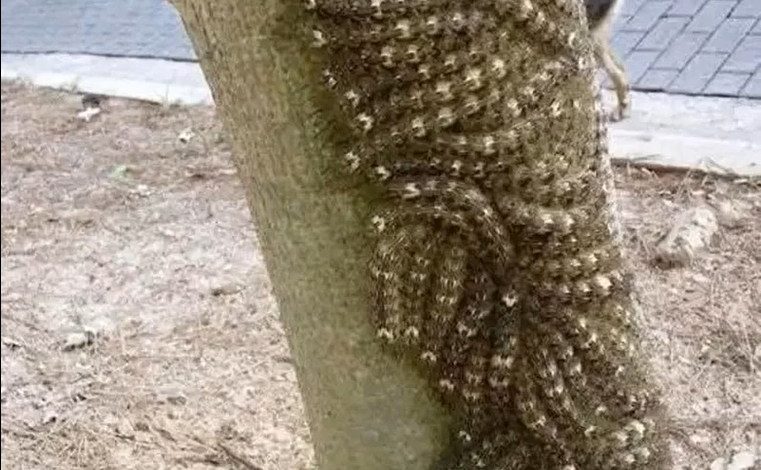
What my daughter nearly touched could have cost her!
It was one of those picture-perfect summer afternoons—blue sky, warm sunlight filtering through the trees, and the sweet smell of fresh grass on the breeze. We had spread our picnic blanket in a quiet spot near a grove, far from the noise of the main trail. The kids darted around barefoot, laughing and chasing each other through patches of sunlight and shade.
At one point, our daughter wandered farther than usual. She stopped beside a tall tree, her voice ringing out with excitement.
“Mom, Dad, come see! This tree has stripes—it’s so pretty!”
I turned my head and saw her small hand reaching toward the trunk. In an instant, my stomach knotted. My husband reacted before I could move—leaping up from the blanket and sprinting to her side. He grabbed her wrist just inches from the bark.
When I got closer, I saw it—the “stripes” weren’t part of the tree at all. They were moving.
Clinging to the trunk was a dense cluster of Lonomia caterpillars, perfectly camouflaged against the bark. Their markings blended so flawlessly with the wood that you’d never suspect danger. But they are among the most venomous insects in the world.
The spines along their bodies carry potent toxins. Even the slightest brush can release venom capable of causing headaches, dizziness, and fainting. In severe cases, the effects escalate to internal bleeding, kidney failure, and, in rare documented instances, death. Children, the elderly, and anyone with weakened immunity are at greatest risk.
We kept our daughter well back while we called the local environmental authorities. They arrived quickly, wearing protective gear, and carefully removed the caterpillars. A warning sign was placed on the tree to keep others safe.
That moment changed how I see the outdoors. I still love nature, but now I approach it with more awareness. Whenever we head out, I bring gloves, a magnifying glass, and a small first-aid kit—not from fear, but to be ready for the unexpected.
If you’re a parent, grandparent, or caregiver, make sure your children know that some of the most beautiful sights in nature can also be dangerous to touch. Strange patterns on bark, clusters of insects, or anything unfamiliar should never be handled. Step back, stay safe, and contact local wildlife experts.
Nature is breathtaking, but it demands respect. One moment of vigilance, one quick decision, can be the difference between a perfect afternoon and a tragedy.




